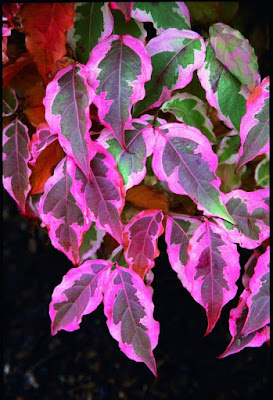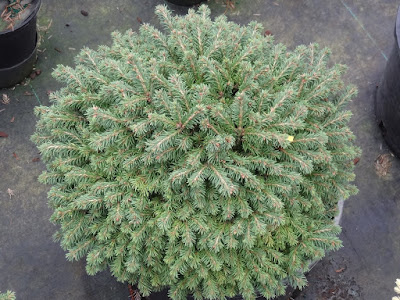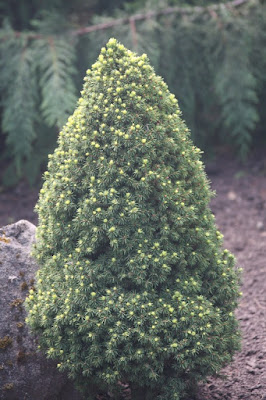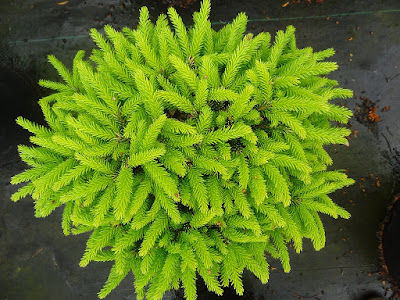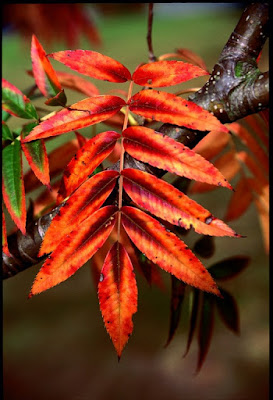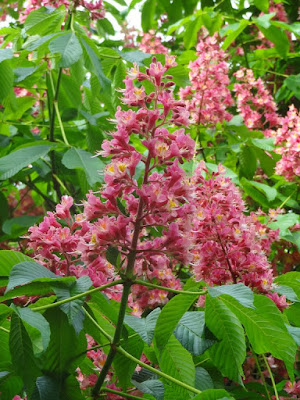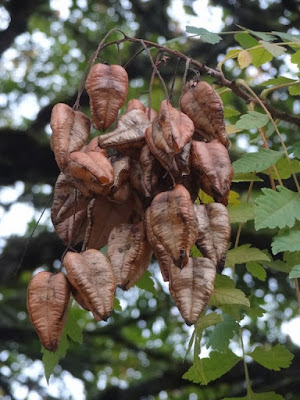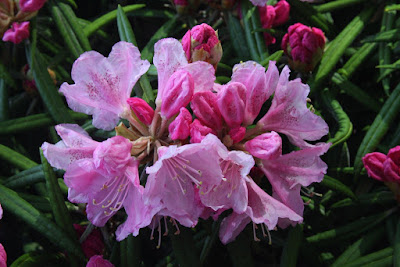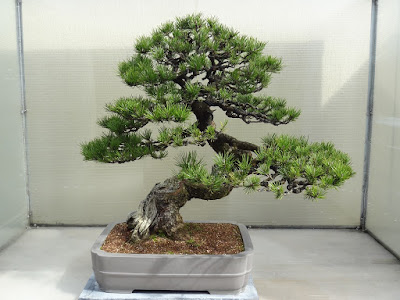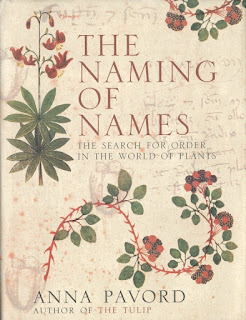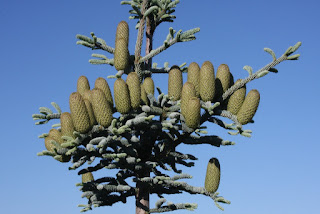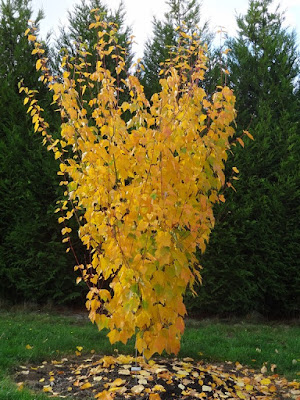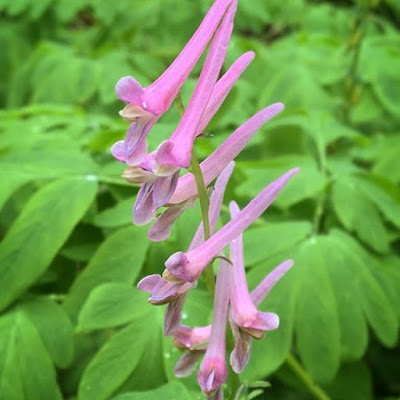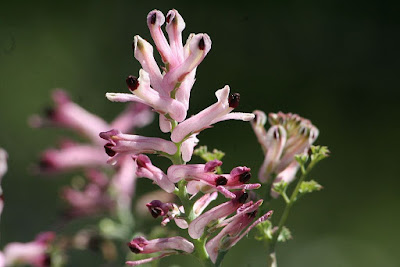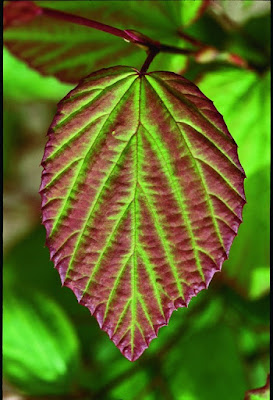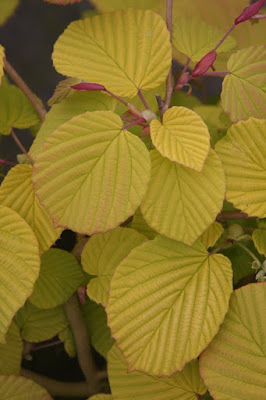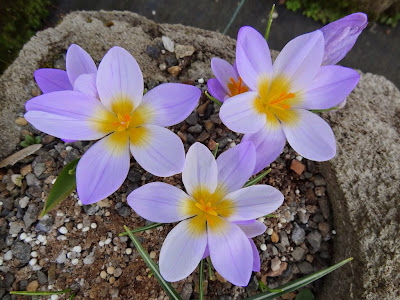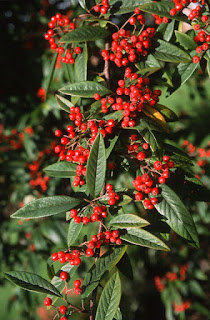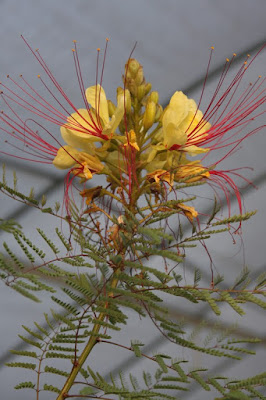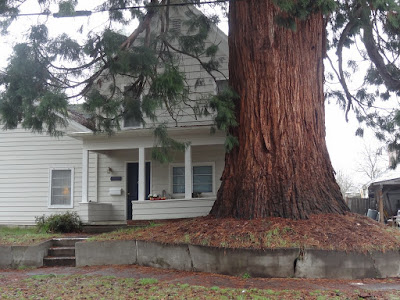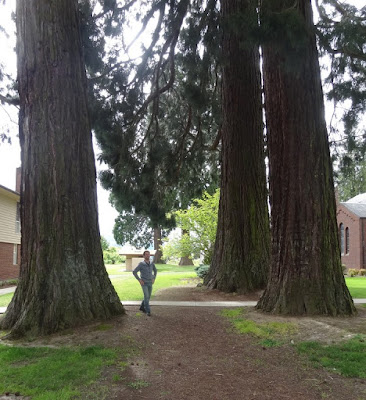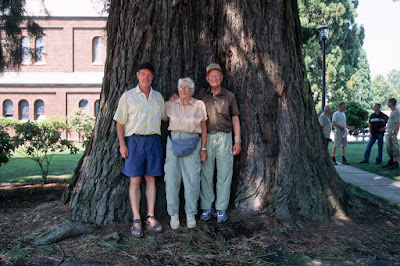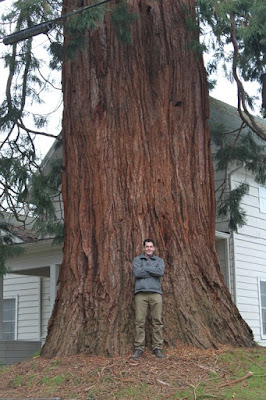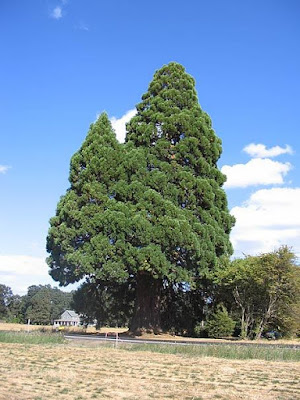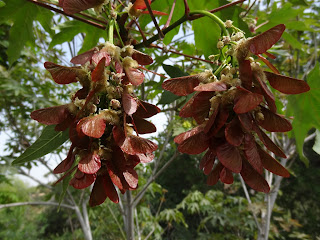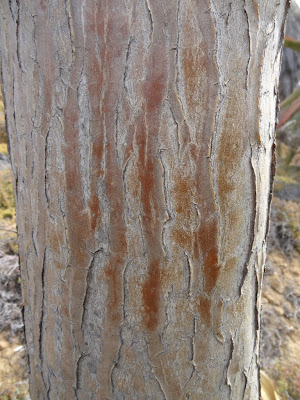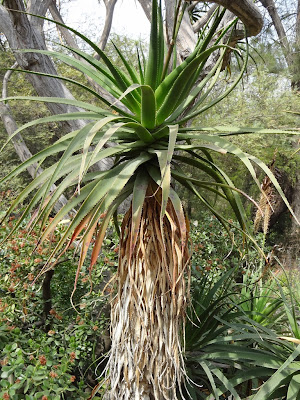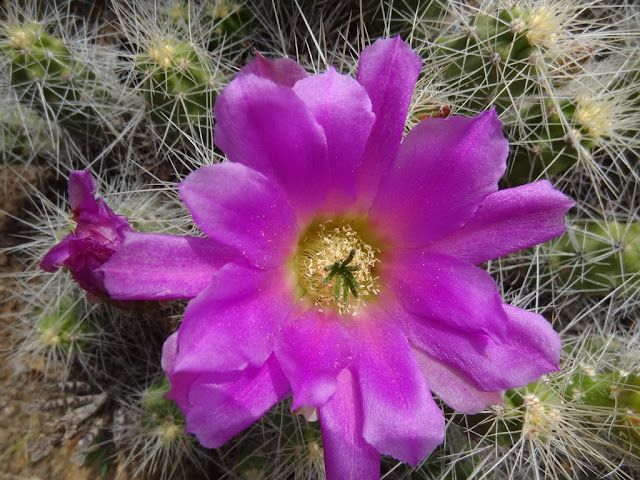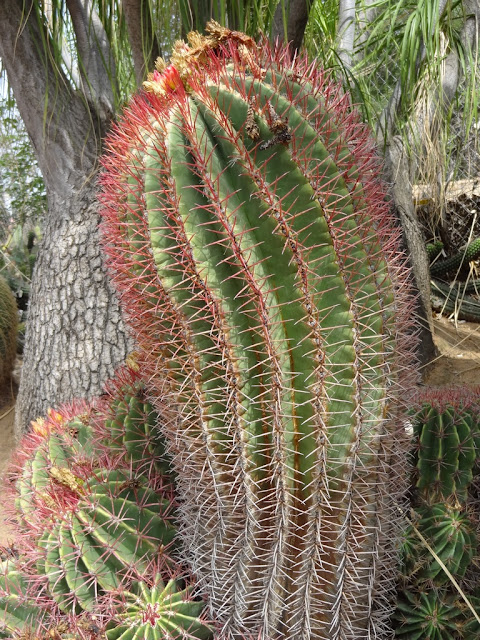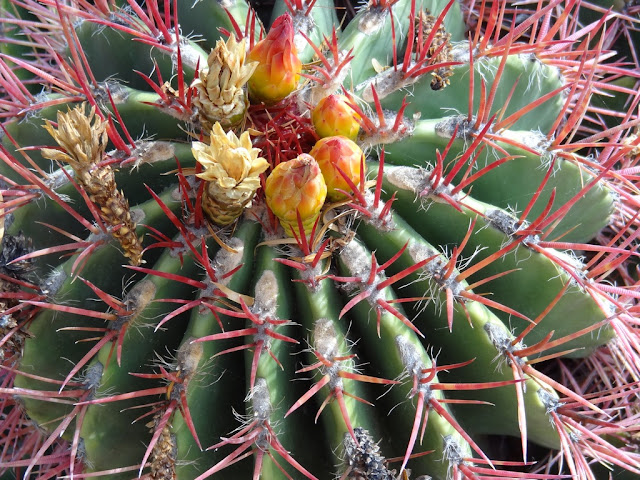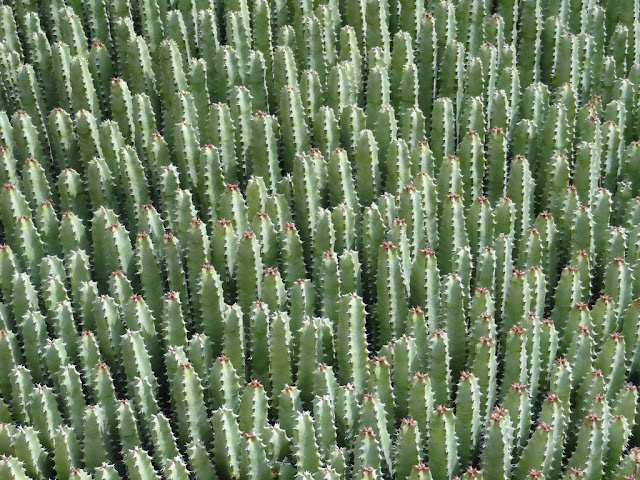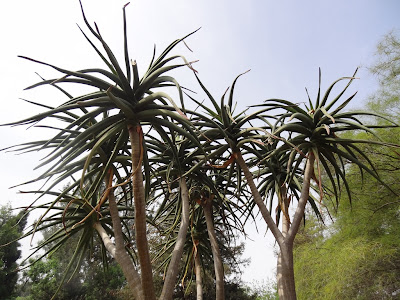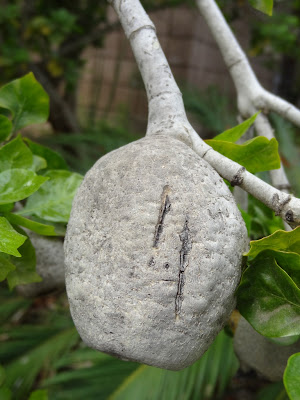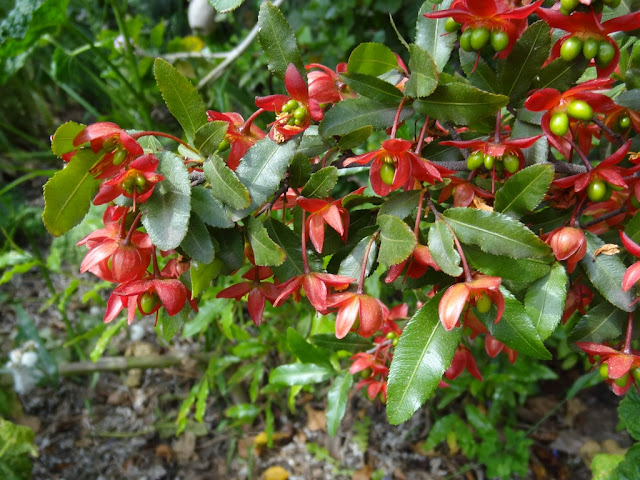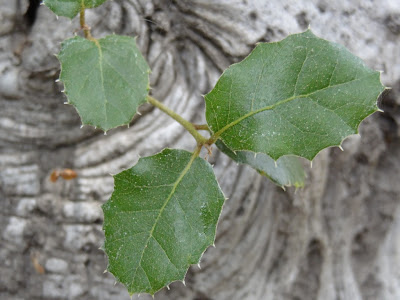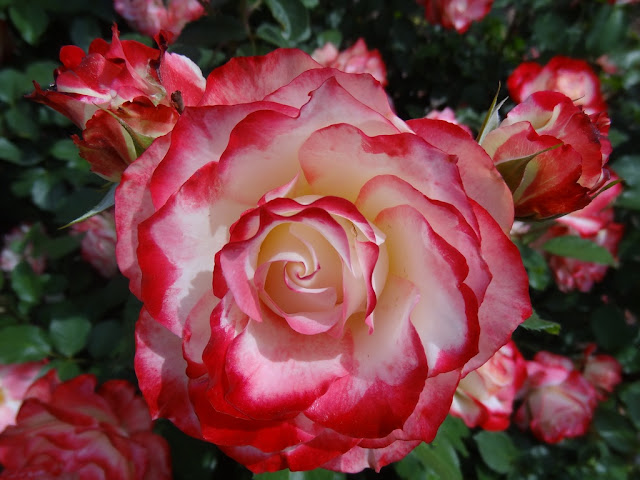To be honest, I could never completely slog my way through a Hemingway novel, but I've always chuckled at the passage in The Sun Also Rises: “How did you go bankrupt?” Answer: “Two ways, Gradually, then suddenly.” Many nursery companies went under in the past decade, but I wonder how many could have been saved with better leadership. The large nursery next door flopped, the huge nursery where I first worked failed, and even the giant Monrovia Nursery had to bail out by selling their souls to the Lowe's box store. For many it must have seemed like a bad dream where you have an urgent purpose but you are paralyzed and cannot get going. The neighbor kept producing plants on the one end, and then burned crop after crop on the other...until the money ran out. Smoke from smoldering soil laced with fertilizer and pesticides billowed over our valley for a couple of years, and now the new ownership is doing the same thing.
At Buchholz Nursery we're content with our modest enterprise and at least we turn a profit. But I question our long-term viability every time we propagate. There is no magic formula about what to produce and how many, and I rely on gut instincts like I always have. How many Cornus kousa 'Summer Fun' should we grow? Well, fortunately we have a market at the one-year graft size, so we'll sell some young plants this summer hopefully. Eventually a row of 30 will go into the field because the trunk calipers develop better in the ground than in a container. Five-to-seven years later they will be dug and put into wood boxes, and these will sit at the nursery for a full year to recover from the digging before they are sold. So, let's see, it might be year 2025 before I get a return on my investment, and that's if all goes well.
This past week we finished grafting and sticking cuttings for the winter season, so let's take a look at what was propagated. A cute “Norway spruce,” Picea abies 'Malena' was grafted low onto Picea abies rootstock, but we also planted a couple hundred cuttings, and the cutting grown plants make for a great addition to our cutie (QT) pot program. 'Malena' grows about an inch a year on its own roots so it stays low and dense and it takes about six years to fill a one-gallon pot. That's not highly profitable, but then very little effort is required from the nurseryman. Our oldest plant is in full sun in the Display Garden, and it never suffers like some of the other dwarf Norways, even when we get to 106 degrees with no humidity. 'Malena' originated as a witch's broom mutation in Switzerland in the 1980's.
Picea glauca 'Pixie Dust' is a fun plant, and likewise we root cuttings as well as graft low and on standards. Any way presented it is a special addition to a trough or rock garden. As a miniature you can expect it to grow from one to four inches per year, and I find it best to keep my stock plants in a greenhouse so that I'll be rewarded with the four inches per year. What is special about the little Alberta spruce is its second flush of growth in summer that is cream yellow, a “dusting” (by pixies?) that contrasts with the older green shoots. I grew a group in our containers in full sun and the yellow growth help up fairly well, nevertheless I think that PM shade would be the best site in most gardens to keep the foliage looking fresh. 'Pixie Dust' originated at Iseli Nursery in the 1990's and it was selected as one of two “Conifers of the Year” in 2006.
Another attractive miniature is Picea orientalis 'Tom Thumb'. We graft it onto Picea abies seedlings, and unlike the above two conifers I've never had success rooting the orientalis species (I would love to hear if someone else has). 'Tom Thumb' is the name often encountered in the trade while some name it 'Tom Thumb Gold'. Whichever way, make no mistake, for the plant is gold and there doesn't exist a green version. And no wonder for it originated as a witch's broom mutation on the golden Picea orientalis 'Skylands', and was discovered in the 1980's by Joel Spingam of New York state. 'Tom Thumb' is another miniature, growing one-to-two inches per year, and again I keep my stock in the greenhouse to force the longer growth. In Oregon it will burn in full sun, but in deep shade the foliage will be greenish, so its best to site similar to the 'Pixie Dust'.
 |
| Picea pungens 'Maigold' |
 |
| Picea pungens 'Gebelle's Golden Spring' |
 |
| Picea pungens 'Spring Blast' |
 |
| Picea pungens 'Spring Ghost' |
There are a few cultivars of “Colorado spruce,” Picea pungens, that feature new growth in April-May that are colored delightfully in contrast with the older foliage. 'Maigold' (Maygold) from Europe and 'Gebelle's Golden Spring' from Ohio are two very worthy conifers with a cream-yellow flush. The fun lasts for about six weeks before the bright needles begin to fade, and at that point you have a regular looking blue-green Colorado spruce again. The new growth on 'Spring Blast' is more white, while the old foliage is more blue than the previous two cultivars. All of these three are an improvement over my original bi-colored 'Spring Ghost' which burns mercilessly. One wag dubbed it: “Spring Ghost, summer toast,” even though my first tree in the Display Garden (at 35 years of age) looks absolutely spectacular in May before it gets hot.
My favorite conifer might be Tsuga mertensiana, the “Mountain hemlock” from the mountains of western North America. I favor it primarily because I am most happy when I am away from work and everybody with their problems and I can hike into the thin air where the hemlock hovers on the slopes of our Cascade Mountains. Foliage is blue-gray, but in July light-blue new growth sparkles diamond-like on the tree. T. mertensiana was named for Karl Heinrich Mertens (1796-1830), a German botanist who explored the coast of America aboard a Russian ship. Some question if T. mertensiana should be included in the Tsuga genus because it is very different form the rest with its radially arranged needles and relatively large Picea-like pendant cones. It went from being classified as Pinus mertensiana to Hesperopeuce mertensiana before being lumped into the Tsugas. In any case we graft some of the most blue cultivars onto seedling T. mertensiana – it's not compatible with the other Tsugas – and it's a long process to get the slow-growing conifer to a salable size. 'Bump's Blue' and 'Powder Blue' are Buchholz introductions, while 'Blue Star' was selected in 1965 by L. Konijn from The Netherlands. 'Elizabeth' is a spreading form, growing twice as wide as tall, and was discovered on Mt. Rainier by Elsie Fry who named it for her daughter. Cultivars of T. mertensiana are rare at the garden centers because they are slow-growing and stock trees tend to produce less-than-vigorous scion shoots. Even the rootstock is slow, and ours are four-to-five years old when we are able to graft.
I enjoy producing Abies grafts because our percentages are usually very high, and besides I like their smell. Can I detect which species is being cut by smell alone? Probably not with accuracy, but almost. As with Mountain hemlock I like the “true firs” because most species originate at the higher elevations. One favorite dwarf is Abies koreana 'Alpine Star'. It was aptly named because its white buds sparkle against the dark green foliage. This tiny gem was selected in Scotland and it is sometimes named 'Alpin Star'.
 |
| Abies lasiocarpa 'Hurricane Blue' |
 |
| Abies lasiocarpa 'Glacier Blue' |
Abies lasiocarpa is the “sub-alpine fir,” and it is native to western North America and the Rockies in regions that also contain the mountain hemlock. The specific name refers to the hairy cone scales, but the distinguishing characteristic is the narrow crown. The variety arizonicais the “Corkbark fir” from Colorado, New Mexico and Arizona, but I've never seen it in the wild to know if the crown is also spire-like. It is known for much more blue foliage, so I assume that the various upright pyramidal cultivars with intense blue needles are var. arizonica. 'Hurricane Blue' and 'Glacier Blue' are especially attractive, but without their labels I probably couldn't tell one apart from the other. Also we grow a few hybrids with Abies koreana crossed with Abies lasiocarpa, and those are of German origin. I think the point of the hybrid is that A. koreana is considered easier to grow than straight A. lasiocarpa. In any case the hybrid shows characteristics of both parents, and displays soft gray-blue needles with silver undersides.
I grew Abies koreana 'Vengels' from scions that were sent to me, but I had never seen an older specimen or knew why it was selected. I observed that it was relatively slow-growing and upright but not a dwarf. One spring day I walked past my six-year-old trees and was stunned by the beautiful, but odd cones, and instantly I knew why it was a selected cultivar. The cones were more long and narrow than the type with pointy scales. When my oldest trees were ten years old I put them up for sale since I had younger stock in the pipeline. They sold on day one, then I completely regretted parting with them. Sometimes capitalism engulfs me and I make decisions I wished I hadn't. Anyway if you ever see 'Vengels' for sale – from me or anyone – you are advised to buy the wonderful curiosity.
We grafted our Hamamelis a couple of weeks ago, when most of our cultivars were in flower. The blossoms appear on the older branches so they don't affect the newer shoots that we use for scionwood. Generally the “witch hazels” are not strong sellers for me – not like with Acer, Cornus, Ginkgo etc. – because they flower so early, before we ship most of our specimen plants. If they're not in bloom they sit at the garden center looking green and boring, and their customers bypass them for something more exciting. So each fall I order 300 Hamamelis virginiana rootstocks in pots at a graftable size, then I have my choice of about twenty cultivars that I could graft. This year half of them were used for H. x intermedia 'Strawberries and Cream' because it is a newer cultivar (for me) and besides I like the name. Each flower consists of four ribbon-like yellow petals that are colored soft red at their base, a fun combination. The garden centers needn't worry if they don't sell in spring or summer because the brilliant butter-yellow autumn foliage is spectacular as well.
 |
| Hamamelis x intermedia 'Orange Peel' at Wisley |
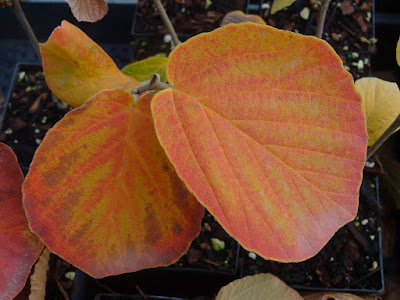 |
| Hamamelis x intermedia 'Orange Peel' |

Hamamelis x intermedia 'Orange Peel'
Another Hamamelis that we grafted is H x. intermedia 'Orange Peel', and once again I like the name. I first saw it at Wisley in England one October, and the green leaves were beginning to color orange. I left the path and stepped into the bed to take a close-up photo...and just then a gardener rounded the corner with his rake and wheelbarrow. He didn't say anything, but I sure would have if I was the gardener! Anyway I've grown 'Orange Peel' for about ten years, and besides the lovely fall color the February flowers are a strong orange as well. This is one of many witch hazels developed at the Arboretum Kalmthout in Belgium.
 |
| Brian Humphrey |
Next to the 'Fincham Cream' in the Betula section at Flora Farm is Betula utilis 'Forest Blush', also selected and named by Brian Humphrey for its “smooth white bark with a hint of blush-pink. From seed collected by George Forrest in Yunnan, China.” (Hillier). I didn't know that Mr. Humphrey was old enough to be selecting birch seedlings collected by George Forrest. Botanist David Don named the utilis species which means “useful,” but prior to that John Lindley named it B. bhojpattra, its Sanskrit name. It is native to the Himalaya up to 14,000', and one of its “uses” was for writing on the bark Sanskrit scriptures and texts in ancient times. Bhojpattra is derived from Sanskrit bhurja which shares a similarity to other Indo-European words that lead to the common name of “birch.”
The final birch we grafted is B. utilis var. jacquemontii 'Jermyns' which received an Award of Garden Merit. It features attractive bark like the previous two mentioned, but is also famous for its long catkins. According to Hillier, “A very vigorous, medium-sized, broadly-conical tree; the very fine white bark is retained into maturity. Catkins long and showy, up to 17 cm. Selected at Hillier Nurseries before 1960 from plants of var. jacquemontii received from the Netherlands via Belgium.” Who knows if I am wasting my time by propagating these three Betula, but one can do worse than be a swinger...er seller of birches.
 |
| Florence Nightingale |
Again I boast of my talented grafter Juana, and not only that, but she also led the rooted cutting crew. This year we propagated many hundreds of species and cultivars, but nothing – no matter how popular today – in huge numbers. In the past “good times” the owner of the neighboring nursery pitied me for my conservative, collector-approach to horticulture. In those days he made more money than I, but then he lost it all as his market crashed. I'm not smugly confident though, and probably I worry about my future more than any other nursery owner.


